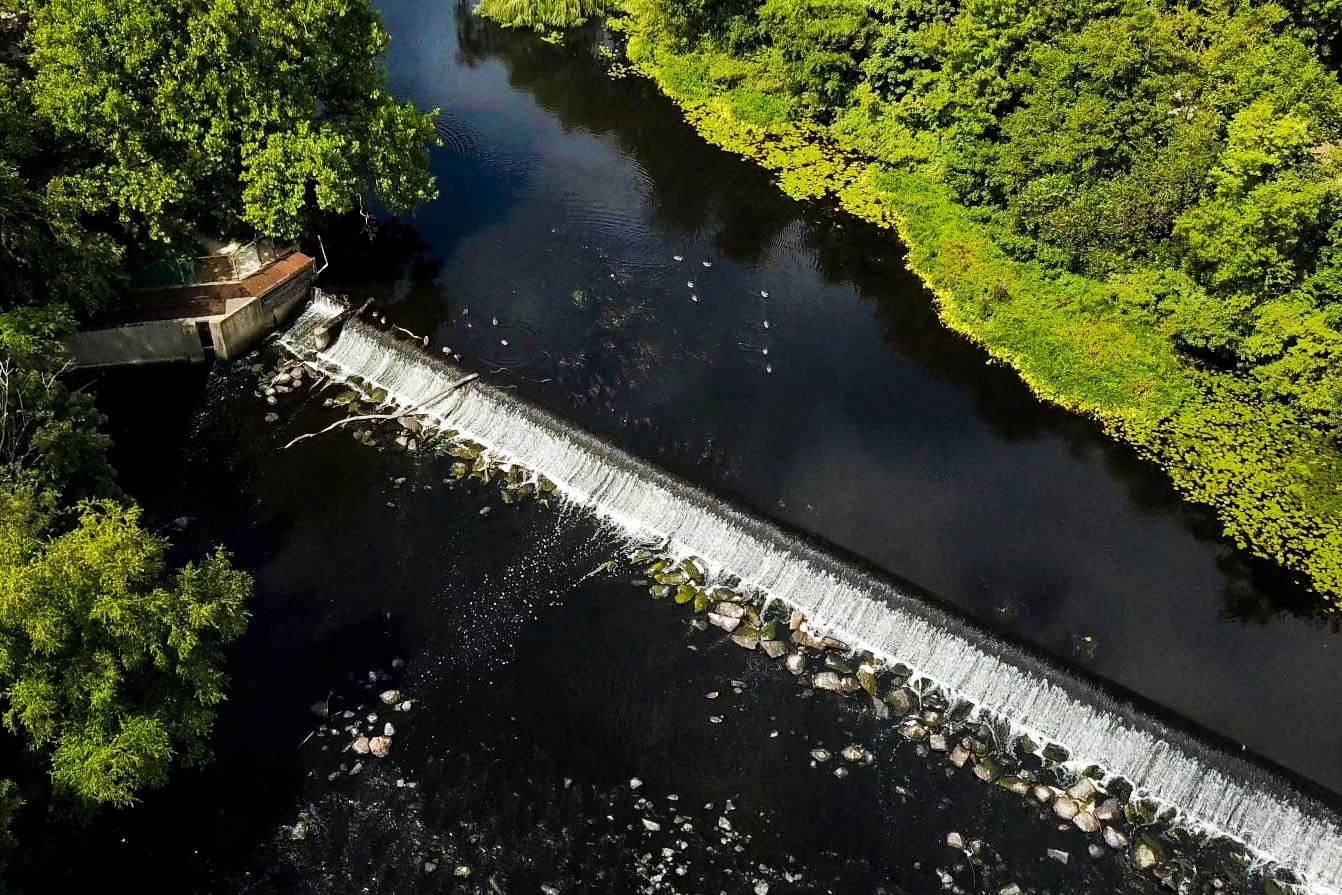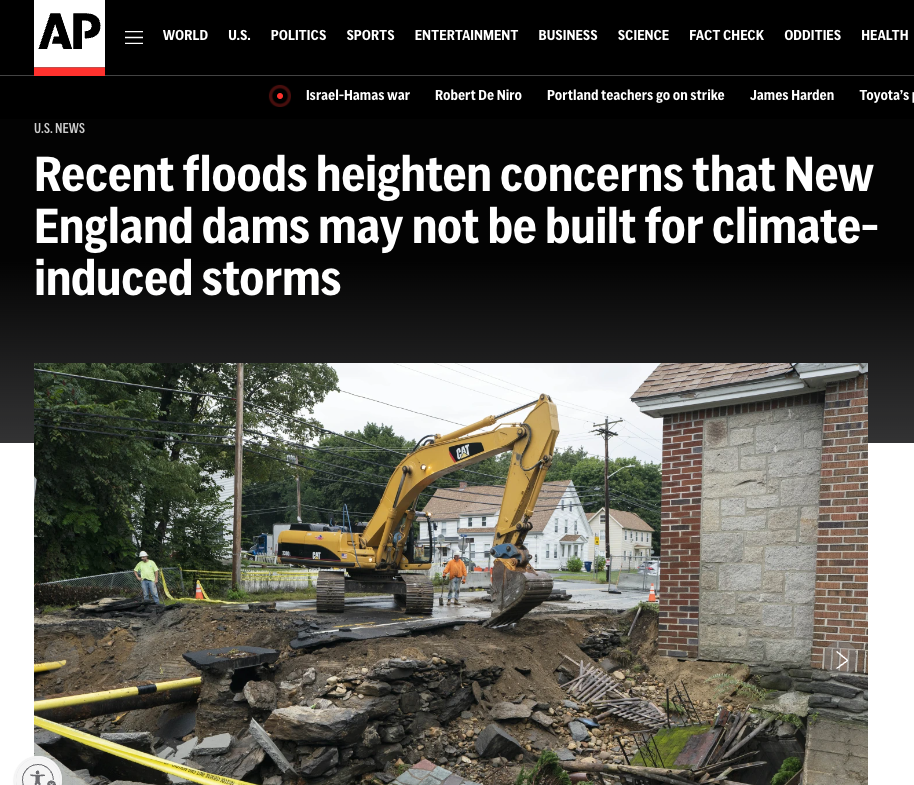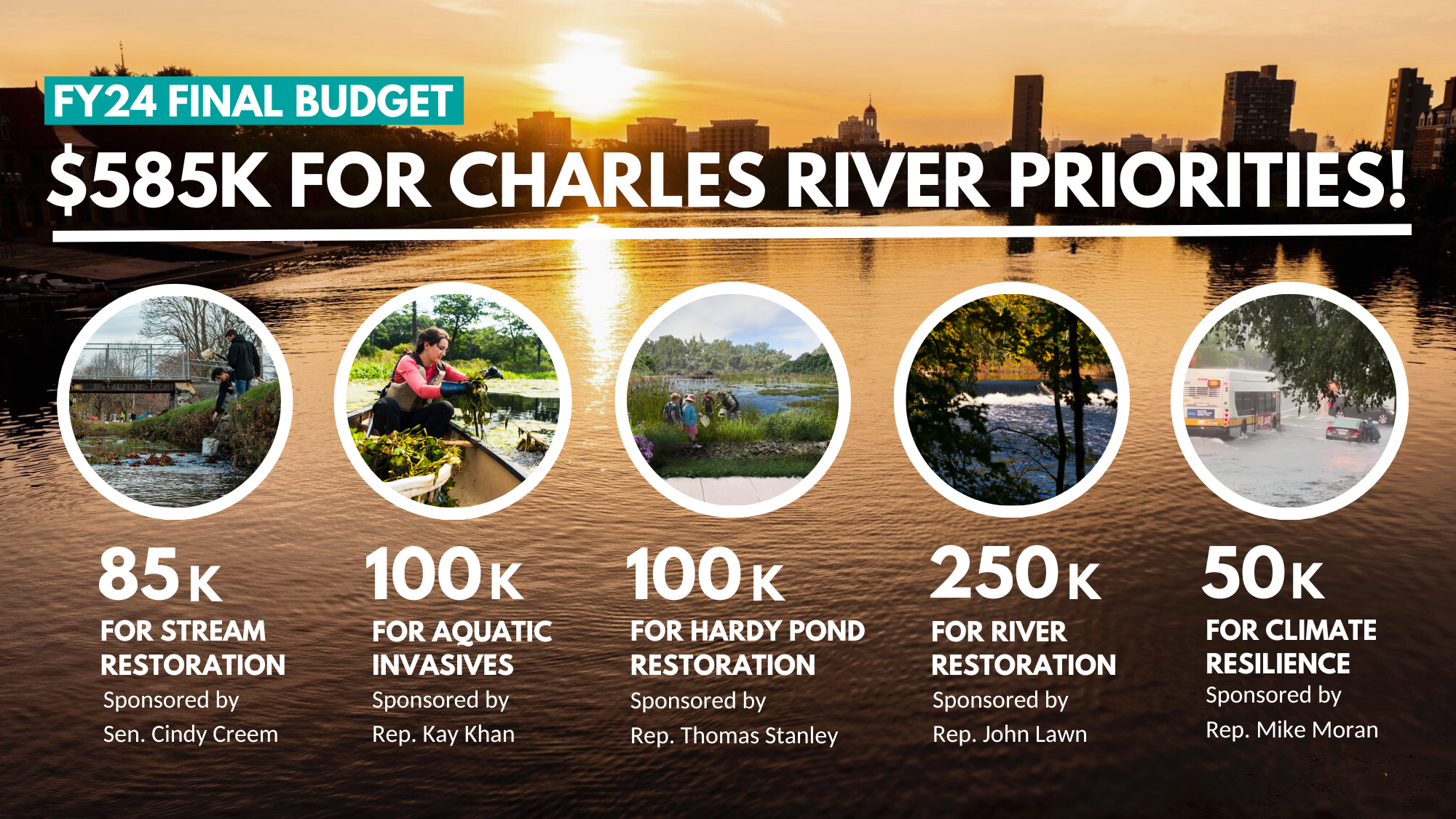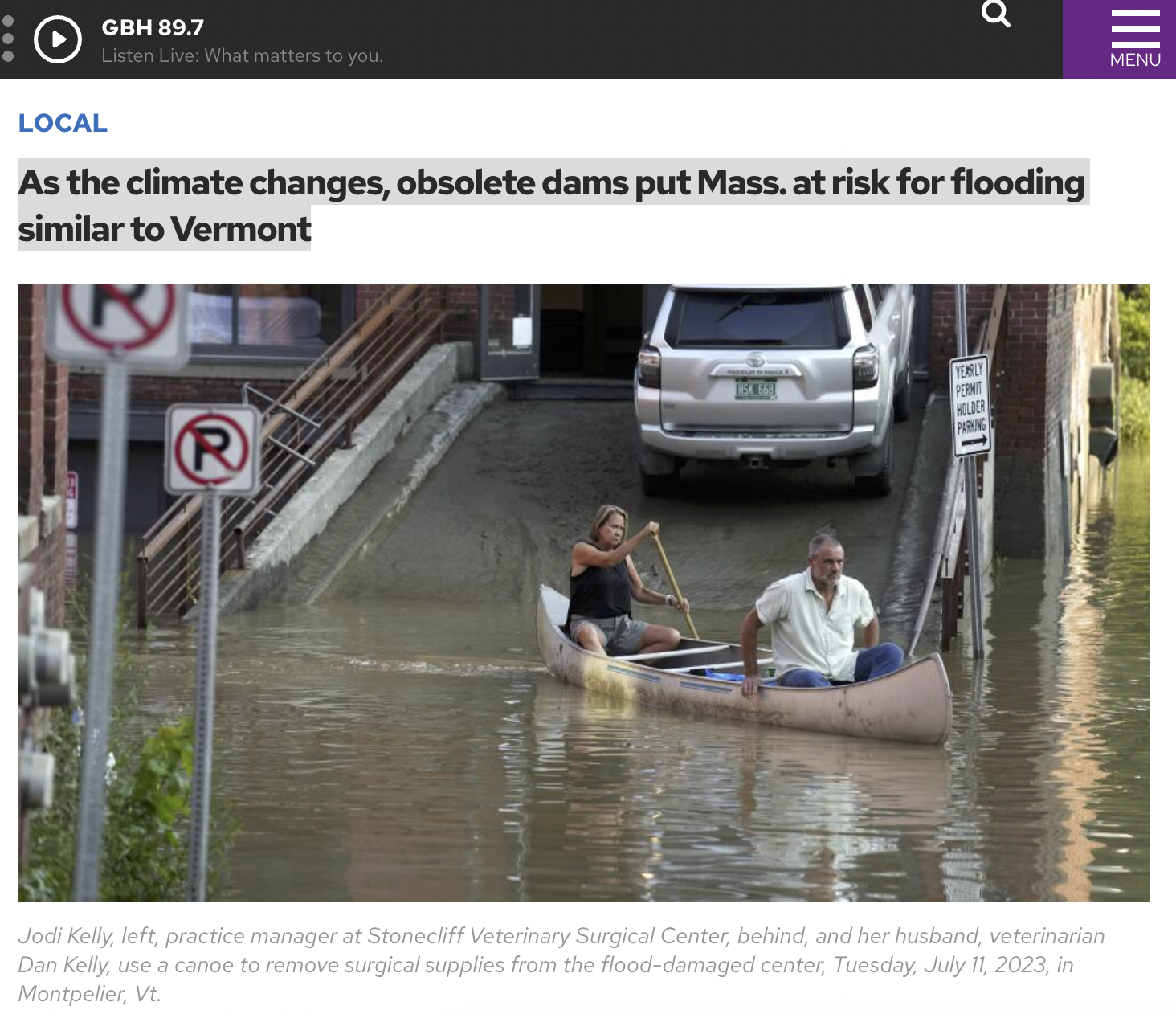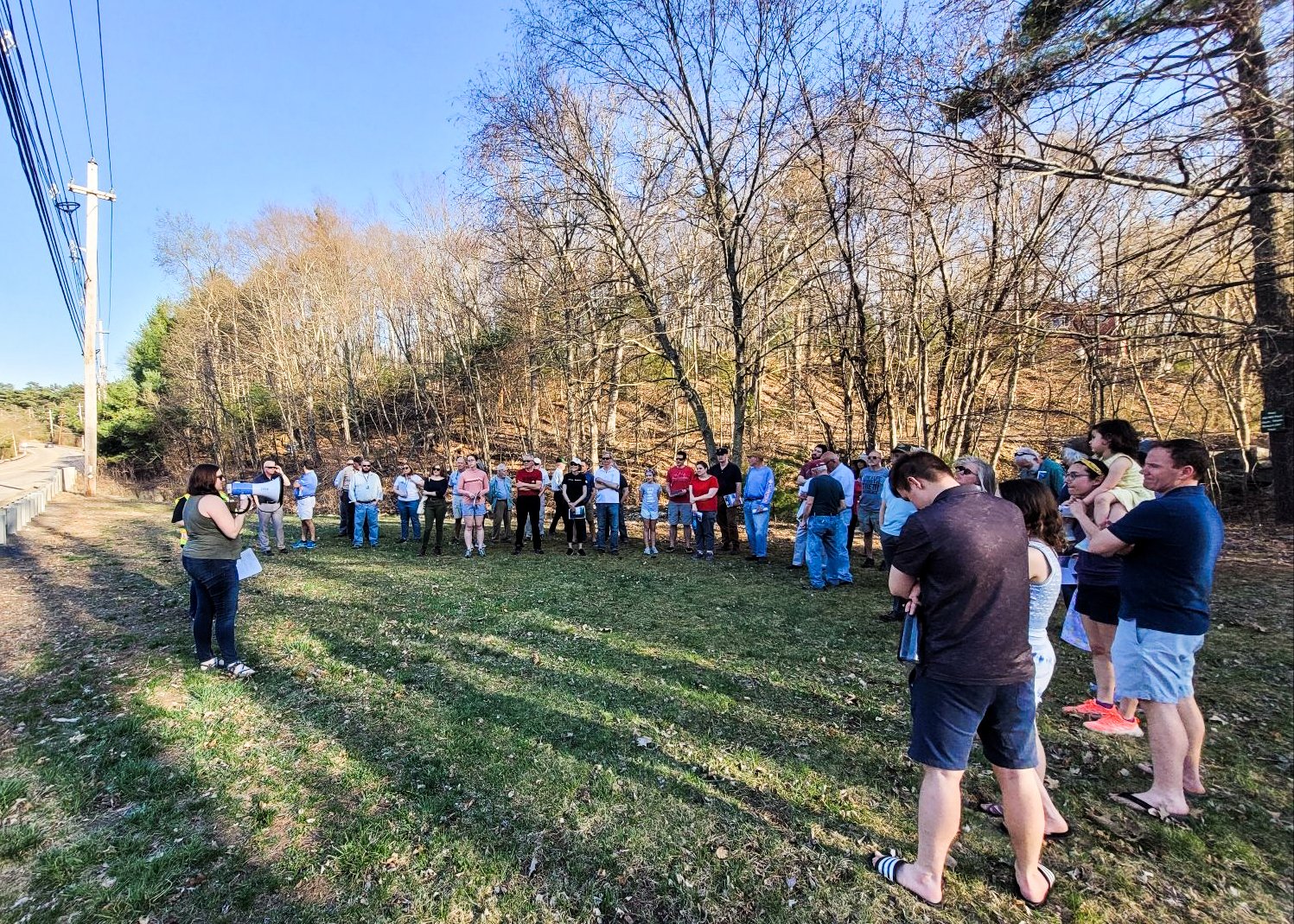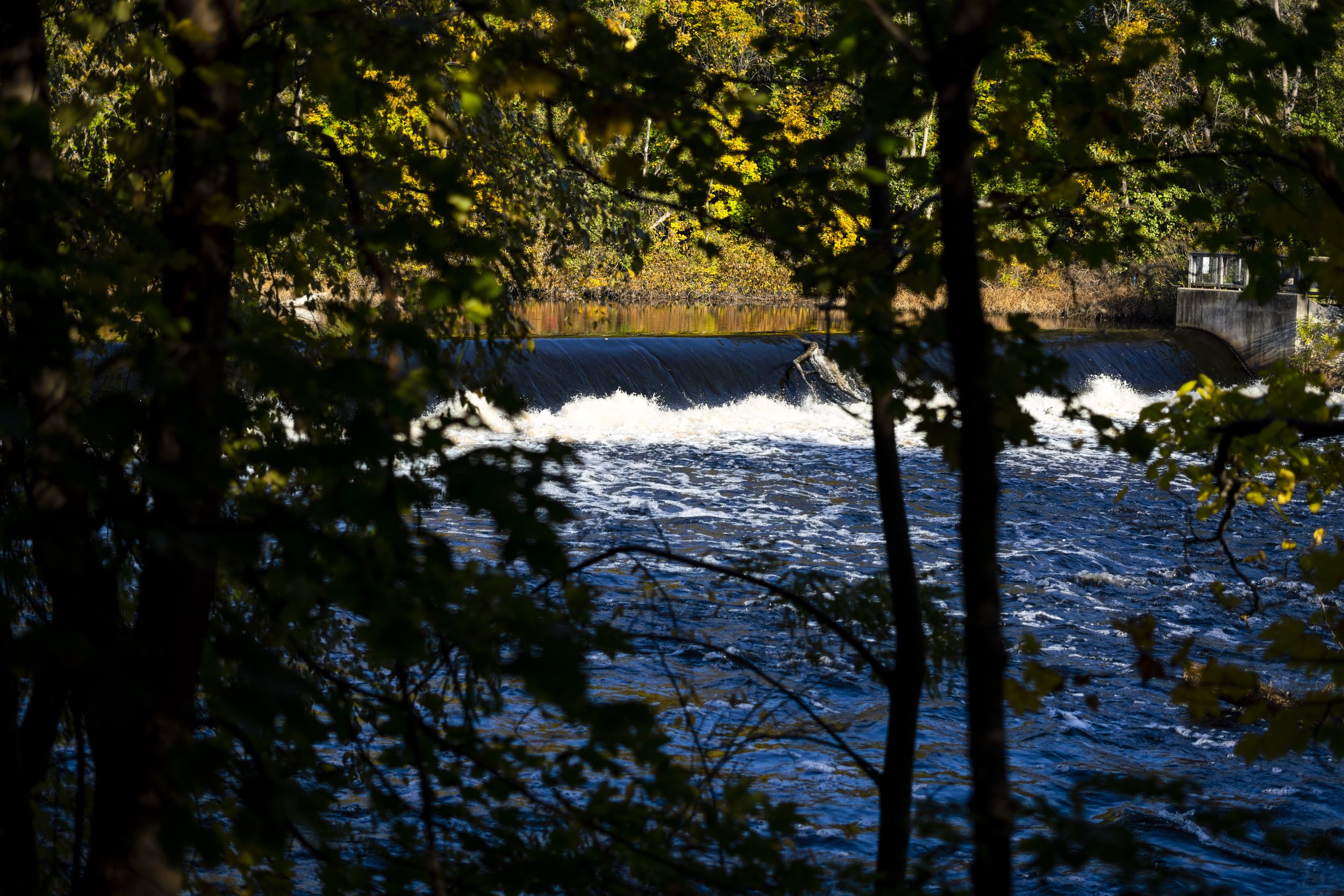
DAM REMOVAL
Restoring a free-flowing, resilient river.
A River Interrupted.
For over 400 years, the Charles River has been altered, controlled, and dammed to bend to the will of industry and development.
The consequences are numerous– today the river suffers impaired water quality, loss of habitat, impeded fish passage, invasive species growth, contaminated sediment, and harmful cyanobacteria blooms, all of which are exacerbated by nineteen dams that interrupt the flow of the Charles River on its eighty-mile journey from source to sea.
With climate change bringing more frequent and severe storm events, the outdated and no longer needed mill dams are in dire need of costly repairs and are increasingly susceptible to failure in severe storm events.
Learn more in A River Interrupted, a long-form exploration of dam removal.
We’re advocating for the removal of defunct dams:
There are over 3,000 dams in the state, and 100+ in the Charles River Watershed alone. While a small number are important, the majority are not.
Removal of defunct dams offers the opportunity to acknowledge the rights of present-day Nipmuc, Massachusett, and Wampanoag people, revive migratory fish populations, restore the river ecosystem, and build climate resilience across the watershed.
WATERTOWN DAM
An aging, 180-ft long, 8-ft high aging concrete weir structure located in the Charles River in Watertown currently owned by the Department of Conservation and Recreation (DCR), Watertown Dam was originally constructed to power industry, yet now holds no purpose for power or flood control.
CHARLES RIVER DAM AT SOUTH NATICK
An earthen dam and concrete spillway owned by the Town of Natick, the present-day Charles River Dam was re-built in 1934 after the original was destroyed in a 1929 flood, and it is rated in “poor condition” by the MA Office of Dam Safety.
In 2021, the Town of Natick started the Charles River Dam Advisory Committee to decide whether to repair or remove the dam. Repair would require the loss of 60 mature trees on the earthen dam, while removal would preserve the vital mature trees, which improve air and water quality, reduce heat island impacts and mitigate flooding.
In November 2022, after years of thoughtful deliberation and study from the Charles River Dam Advisory Committee, Natick Select Board voted 4-1 in favor of dam removal and restoration of a free-flowing Charles River for future generations. We are thankful for the support of our allies from Eco Natick, Mass Audubon, Massachusetts Rivers Alliance, Natick Religious Leaders Association, Native Fish Coalition Massachusetts Chapter, Sierra Club Massachusetts Chapter, Trout Unlimited Greater Boston Chapter.
WRENTHAM EAGLE DAM
A crumbling, functionless earthen dam rated in “unsafe condition” on Eagle Brook, a tributary of the Charles River in Wrentham, MA, Eagle Dam was originally constructed in the 1800s to power a corn mill. Today, the dam holds no purpose and was identified as a vulnerability during the Town of Wrentham’s local climate plan.
Owned by the Town of Wrentham, the dam is in hazardous disrepair––the spillway was damaged but never professionally repaired after initial failure, severe erosion of the embankment has occurred, and there is an overgrowth of vegetation, including large trees, which impacts the structural integrity of the dam. In April 2021, Wrentham completed the Eagle Dam Removal Feasibility Study, which found removal is feasible, would cost less than repair, and offers the opportunity to reduce flooding hazards to downstream communities. Now, a second phase of study looked at the downstream flooding impacts of breaching the dam and explored the benefits of dam removal.
We’re working with the Town of Wrentham to explore options, educate the community, and build local support for dam removal and river restoration thanks to funding from the Municipal Vulnerability Preparedness program.
LEARN MORE >> SUMMARY OF RESULTS OF H+H STUDY >
-
Town of Wrentham Eagle Dam Website
Eagle Dam Removal Flood Model H&H Fact Sheet
Map: No Change In Downstream Flooding in Present-Day Storm with Dam Removal
Eagle Dam Meetings 1,2,3 Spring 2023 Slides, CRWA
Eagle Dam Meetings 1,2,3 Spring 2023 Slides, Weston & Sampson
Wrentham Eagle Dam Public Meeting #1 Wrentham Recording 5.1.23
Wrentham Eagle Dam Public Meeting #2 Norfolk Recording 5.8.23
Wrentham Eagle Dam Public Meeting #3 Abutters Recording 5.11.23
Environmental Partners Report on Water Supply Wells
Eagle Dam Removal Technical Feasibility Study Presentation 5.4.21
Eagle Dam Removal Technical Feasibility Study Recording 5.4.21
Eagle Dam Removal Technical Feasibility Study ESS Group 2021
Sucker Brook Restoration Video Pepperell, MA
Field Survey and Investigations Weston & Sampson 2023
Hydraulic Analysis Weston & Sampson 2023
Wrentham Department of Public Works Report on Eagle Dam Failure, 1972
Wrentham Board of Selectmen Meeting Presentation 9.15.20
Wrentham Board of Selectmen Meeting Recording 9.15.20
Dams & Indigenous Food Sovereignty
Before colonization, the Charles River flowed freely and Indigenous ancestors relied on its vibrant population of migratory fish for food, ecosystem benefits, and cultural survival.
In 1783, despite Massachusetts law requiring dam owners to provide ample fish passage, colonists raised Watertown Dam several feet to increase its power yield, completely blocking spring fish runs upstream to the Nipmuc people in Natick.
Nipmuc ancestors residing in Natick actively petitioned the state legislature in opposition to the Watertown Dam, as it infringed on Indigenous rights to food sovereignty, stripping the community of vital resources, cultural ways of life, and free-flowing water.
WATCH THE PRESENTATION by Kristen Wyman, a member of the Nipmuc Nation, on the importance of restoring fish passage and Indigenous foodways.
“The amazing thing about dams is that when you remove the dam, you are immediately removing the impacts that dam was causing, and you immediately restore river health. And so many river scientists say that one of the best things you can do for a river is to remove the dams that are on it.”
—Beth Lambert, Director of the Massachusetts Division of Ecological Restoration (DER)
What about functional dams?
A small number of functional dams are important––several provide critical protection from flooding, like the Charles River Dam in Boston, and drinking water supply for residents, like Echo Lake in Hopkinton.
We advocate for proactive maintenance and updates to functional dams––including efforts to prepare these structures for the hazards of climate change and improvements to migratory fish passage structures, which allow fish to travel upstream to spawn.
As our climate changes, it is critical that we rethink our built infrastructure in a thoughtful and comprehensive manner that takes individual site constraints, benefits, and community needs into account.


